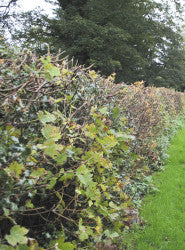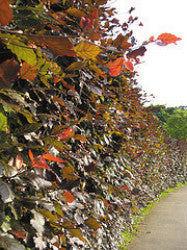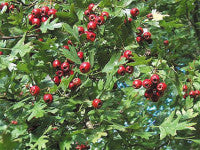Hedging your bets
 Paul Thornton, Head Gardener at Rugby School, looks at the benefits of planting hedges and offers tips on variety, planting, maintenance and legislation.
Paul Thornton, Head Gardener at Rugby School, looks at the benefits of planting hedges and offers tips on variety, planting, maintenance and legislation.
One of the most important features of any area of green space is its boundary. The boundary shows where the area starts and finishes, acts as a form of security and privacy, leads the eye in a desired direction and can bring a sense of intimacy to a garden too. There are many types of boundary to choose from but the most natural looking of all are hedges. They are often described as wildlife corridors that provide habitat for birds, insects and animals as well as providing them with cover as they move between feeding sites; so important as habitat is lost to development.
Formal or informal?
For a neat, formal hedge you could use Conifer, Laurel (which has the added bonus of white flowers in spring), Privet, Beech or try Holly or Yew for their red berries.
For security, try thorny plants like Hawthorn or Berberis, which will have the added bonus of flowers and berries.
Where circumstances allow, a more informal, flowering hedge can be used. This can be made up of a single subject or for added interest why not go for a mixed hedge? Suitable plants include; vigorous rose species like Rosa rugosa 'Scabrosa' with its purple-pink flowers, followed by red hips; Escallonia Rubra (an evergreen shrub with deep pink flowers). Others include Weigela 'Florida Variegata' which has white margined, grey-green leaves and pink flowers in late spring and early summer, or how about Pyracantha with its white flowers and orange berries?

Maintenance
Of course, the down side to hedges is the maintenance and this needs to be done regularly. I know, from painful experience, that it is far easier to cut a hedge with short, thin growth than one that has been neglected and become a straggly mess, which is hard work and the finished article is nowhere near as good as one regularly trimmed.
A well-trimmed hedge is a real asset, as its neat, sharp edges form a complementary green background against which the informal shapes of plants and shrubs can stand out.
If you have ever visited Hidcote Gardens in Gloucestershire, you will know that hedges are used to great effect with the garden being divided into a series of 'rooms' by the many hedges there.
If you have a hedge that is starting to get a bit wild, the winter months provide the ideal opportunity to get back on top of it, particularly as nesting birds are not at risk. Also, trimming back a very overgrown hedge can actually make your grounds larger - just think of all that space!
Good equipment will give a good quality finish, be that pedestrian hedge trimmers or tractor mounted. Remember that in our industry the safety of our operators is paramount, so working from a safe secure platform is all-important when trimming.
Planting
 You might think that hedges are an expensive option. This is not always the case; hedging plants can be bought very cheaply at this time of year in bundles from suppliers. These are bare rooted plants that are very easy to put in and they soon establish as the winter and spring periods allow the plants time to develop their root systems steadily, in readiness for the demands of summer.
You might think that hedges are an expensive option. This is not always the case; hedging plants can be bought very cheaply at this time of year in bundles from suppliers. These are bare rooted plants that are very easy to put in and they soon establish as the winter and spring periods allow the plants time to develop their root systems steadily, in readiness for the demands of summer.
To plant a bare root hedge, first clear the ground of weeds, next dig out a trench of about a spade depth and add well-rotted muck or compost to the soil at the bottom, as this will give the hedge an excellent start and keep it going for many years to come.
The plants can be placed in the trench up to their original soil line, adding soil and incorporating bone meal (for root development) and a slow acting fertiliser. Plant at a distance of between 38-45 cm (15-18"), depending on the variety, and make sure they are well firmed in to avoid movement during winter wind and rain.
In an area where security or vandalism is a problem a temporary fence can be erected alongside the hedge to help nurse it towards maturity, after which it may be taken down allowing the hedge to stand of its own accord.
Good bare rooted hedging plants include Beech, Privet, Hornbeam and Hawthorn.
High Hedge Legislation
New legislation came into force on 1st June 2005 that enables the Local Authority to consider applications to reduce the height of evergreen hedges that are causing a nuisance. A complaint can be made where:
1. The hedge consists of two or more evergreen or semi-evergreen trees or shrubs in a line.
2. The hedge is more than 2 metres in height.
3. The hedge stands on land owned by someone else.
Hedging can be a real asset if it is well maintained and, provided it is looked after regularly, it shouldn't get out of hand. Hedges take commitment but, in most situations, the aesthetic and environmental benefits outweigh any negatives.
Article Tags:
Industry news